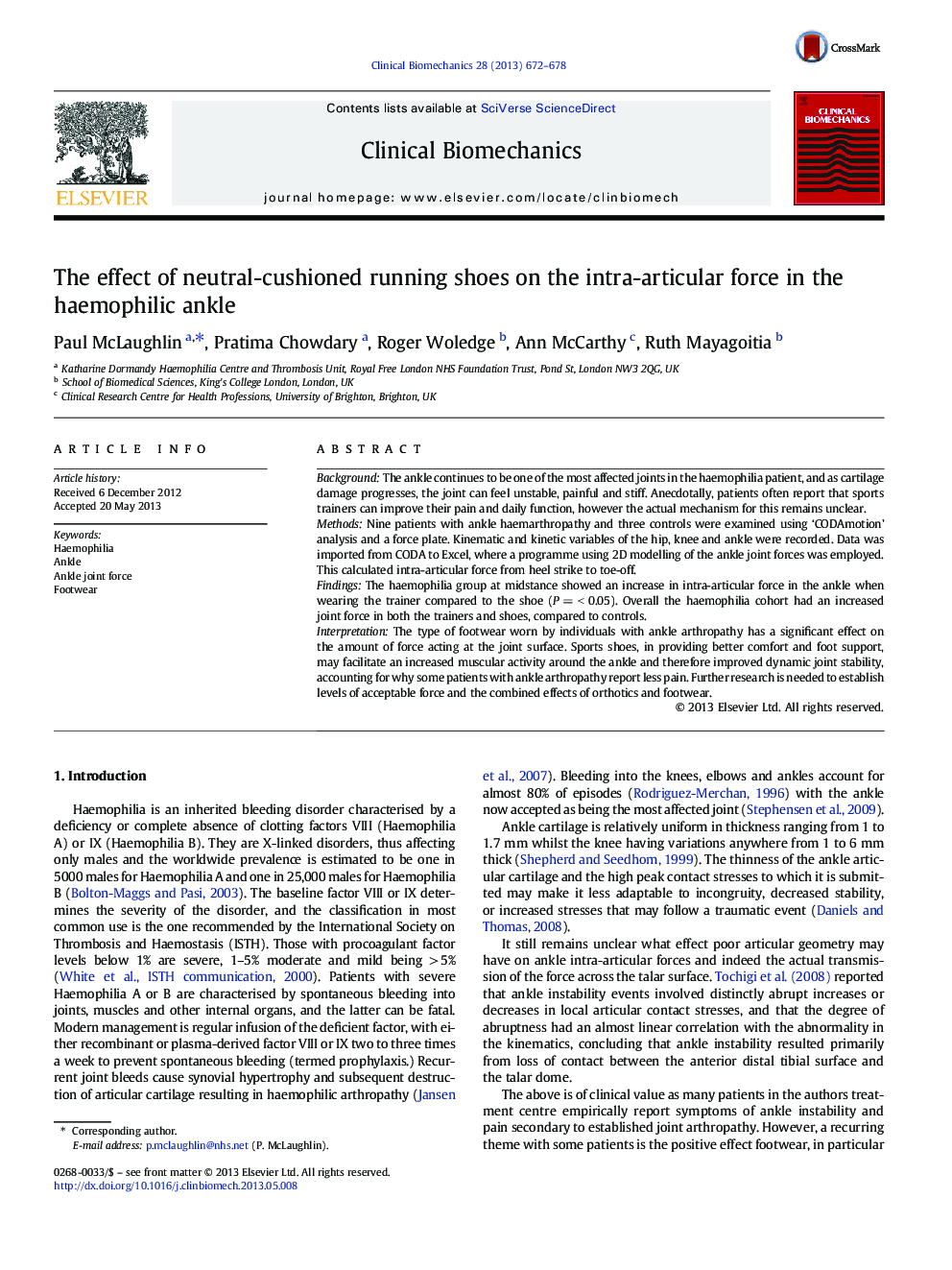| Article ID | Journal | Published Year | Pages | File Type |
|---|---|---|---|---|
| 4050662 | Clinical Biomechanics | 2013 | 7 Pages |
BackgroundThe ankle continues to be one of the most affected joints in the haemophilia patient, and as cartilage damage progresses, the joint can feel unstable, painful and stiff. Anecdotally, patients often report that sports trainers can improve their pain and daily function, however the actual mechanism for this remains unclear.MethodsNine patients with ankle haemarthropathy and three controls were examined using ‘CODAmotion’ analysis and a force plate. Kinematic and kinetic variables of the hip, knee and ankle were recorded. Data was imported from CODA to Excel, where a programme using 2D modelling of the ankle joint forces was employed. This calculated intra-articular force from heel strike to toe-off.FindingsThe haemophilia group at midstance showed an increase in intra-articular force in the ankle when wearing the trainer compared to the shoe (P = < 0.05). Overall the haemophilia cohort had an increased joint force in both the trainers and shoes, compared to controls.InterpretationThe type of footwear worn by individuals with ankle arthropathy has a significant effect on the amount of force acting at the joint surface. Sports shoes, in providing better comfort and foot support, may facilitate an increased muscular activity around the ankle and therefore improved dynamic joint stability, accounting for why some patients with ankle arthropathy report less pain. Further research is needed to establish levels of acceptable force and the combined effects of orthotics and footwear.
